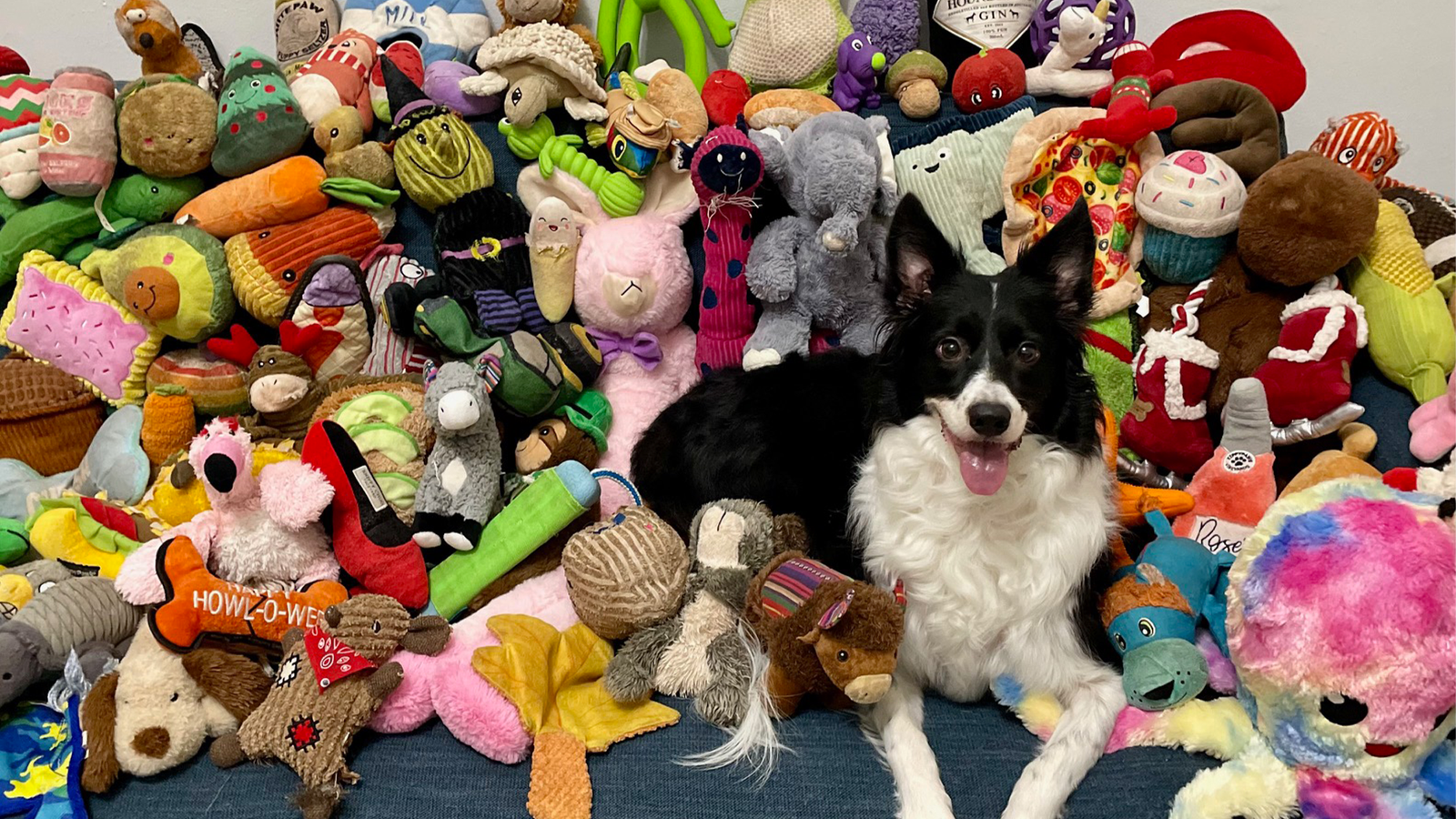We’ve long known that dogs are pretty smart. They may “picture” objects in their heads just like us, communicate with button boards, and can even understand fairly complicated words. They also appear to categorize objects by function, understanding how similar types of toys work, even if they don’t look alike. The findings are detailed in a study published today in the journal Current Biology.
Human infants naturally learn new words and their associations, such as how spoons are related to plates because they are both used to eat or jackets are related to shoes since both are worn outside. Dogs could be doing something similar.
In this new study, a group of Gifted Word Learner (GWL) dogs showed that they can tell the difference between the toys used for tugging versus fetching, even if the toys did not look similar. GWL is a relatively new distinction by scientists for dogs that are considered uniquely gifted for their ability to learn the names of various objects.

“We discovered that these Gifted Word Learner dogs can extend labels to items that have the same function or that are used in the same way,” study co-author Claudia Fugazza, an ethologist specializing in dog social learning at Eötvös Loránd University in Budapest, Hungary, said in a statement.
According to Fugazza, this is similar to a person calling a hammer and a rock by the same name.“The rock and the hammer look physically different, but they can be used for the same function. So now it turns out that these dogs can do the same,” she says.
The study took place in the dogs’ natural home environments and with their human owners. During the beginning of the experiment, the dogs spent time familiarizing themselves with the verbal labels of two functional groups of objects: toys for pulling and toys for fetching. Their owners used the words “pull” and “fetch” and played with them accordingly, even though the toys didn’t share any similar physical features.
The team then retested the dogs to see if they had learned to connect the functional labels to the right group of toys, before playing with new toys in two different categories. However, their owners did not use the labels pull and fetch this time. In this stage, the dogs were able to use the functional labels that they had learned previously to the new toys solely based on their experience playing with them.
In their final test, the dogs showed that they could apply the verbal labels to the toys by either pulling or fetching, even if their owners hadn’t named them.
“For these new toys, they’ve never heard the name, but they have played either pull or fetch, and so the dog has to choose which toy was used to play which game,” said Fugazza. “This was done in a natural setup, with no extensive training. It’s just [the] owners playing for a week with the toys. So, it’s a natural type of interaction.”
This ability to connect verbal labels to objects based on what they do and not how they appear bolsters the theory that dogs can form a mental picture of the objects based on their experiences, which they can recall later.
More research is needed to understand the full scope and flexibility of dogs’ language categorization abilities, as well as a larger sample size and with dogs not categorized as GWLs. The team suggests that future studies could explore if the dogs that don’t learn object labels still have an ability to classify objects based on what they do.
“We have shown that dogs learn object labels really fast, and they remember them for a long period, even without rehearsing,” Fugazza said. “And I think the way they extend labels also beyond perceptual similarities gives an idea of the breadth of what these labels could be for dogs.”
The post Dogs can learn and remember how toys work appeared first on Popular Science.

